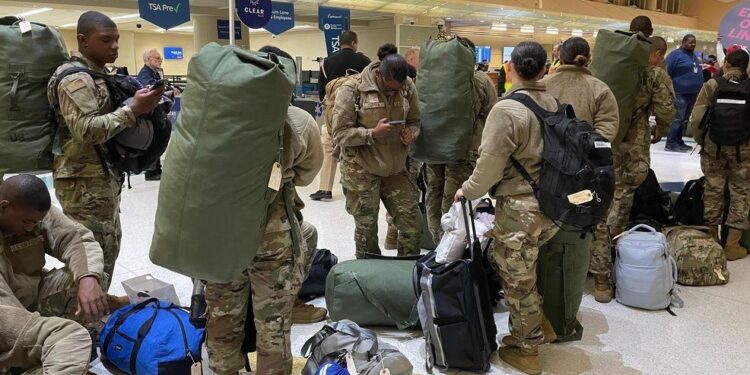Military units from multiple countries are set to traverse Bulgaria’s national roads and railway networks as part of Exercise Balkan 25, a large-scale multinational defense drill aimed at enhancing regional cooperation and operational readiness. The exercise, coordinated in close partnership with Bulgarian authorities, will see coordinated movements of personnel and equipment across key transit routes, underscoring Bulgaria’s strategic role in NATO’s southeastern flank. Scheduled to take place over the coming weeks, Exercise Balkan 25 is expected to test logistical capabilities and strengthen interoperability among allied forces in a complex simulated operational environment.
Military Mobilization Plans for Bulgaria’s National Roads and Railways during Exercise Balkan 25
In preparation for Exercise Balkan 25, Bulgarian military authorities have outlined comprehensive mobilization plans that will utilize key national roads and railways to ensure rapid and efficient deployment of personnel and equipment. The initiative will see convoys moving along primary corridors such as the Trakia and Hemus highways, alongside critical railway junctions connecting Sofia, Plovdiv, Varna, and Burgas. This integrated transport strategy aims to streamline logistics while minimizing traffic disruptions in civilian areas during the month-long exercise.
Officials have emphasized the importance of coordination between military units and civilian transport agencies to maintain safety and communication throughout the operation. Key highlights include:
- Dedicated military transport lanes on select highways during peak movement phases
- Rail scheduling adjustments to accommodate heavy cargo trains without delaying passenger services
- Real-time monitoring through centralized command centers to track all convoys and respond to any incidents
| Route Type | Main Corridors | Logistics Focus |
|---|---|---|
| National Roads | Trakia, Hemus, Struma Highways | Rapid troop transport, convoy staging areas |
| Railways | Sofia-Plovdiv-Varna-Burgas Lines | Heavy equipment movement, schedule coordination |
Logistical Challenges and Strategic Routes Selected for Exercise Balkan 25 Movements
Transporting heavy equipment and hundreds of personnel across Bulgaria’s infrastructure for Exercise Balkan 25 involves overcoming notable logistical hurdles. Military convoys are scheduled to traverse a complex network of national roads and railways, requiring meticulous coordination to avoid disruptions to civilian traffic and ensure timely deliveries. Key routes have been evaluated for capacity limitations, bridge load restrictions, and the availability of secured staging areas, with special attention paid to avoiding bottlenecks near urban centers such as Sofia and Plovdiv.
Strategically, a combination of rail and road transport maximizes both speed and flexibility. Rail is preferred for long hauls of armored vehicles and heavy gear, while road convoys handle more delicate or urgent transfers. Below is a brief overview of selected routes and their primary functions during the exercise:
- Rail Corridor 1: Sofia to Ruse – bulk transport of armored personnel carriers
- Road Route A1: Sofia to Plovdiv – troop movements and communication units
- Rail Corridor 3: Burgas to Varna – logistical support and resupply
- Road Route B2: Plovdiv to Blagoevgrad – quick-response detachment deployment
| Route | Primary Use | Distance (km) | Key Challenge |
|---|---|---|---|
| Rail Corridor 1 | Armored Transport | 320 | Bridge load limits |
| Road Route A1 | Troop Movement | 145 | Urban congestion |
| Rail Corridor 3 | Resupply | 130 | Scheduling conflicts |
| Road Route B2 | Rapid Deployment | 90 | Mountain passes |
Recommendations for Enhancing Transport Infrastructure to Support Large-Scale Military Exercises
To ensure seamless logistics and operational efficiency during large-scale military maneuvers like Exercise Balkan 25, it is imperative to prioritize the modernization of Bulgaria’s transport infrastructure. Upgrading key national roads to handle increased heavy vehicle traffic will reduce delays and minimize wear and tear. Incorporating advanced traffic management systems and improving road signage can also facilitate smoother troop movements and enhance overall safety. Additionally, expanding rest areas and logistics hubs along critical routes will provide necessary support for personnel and vehicles, minimizing downtime during deployments.
Strategic enhancements to the national rail network are equally vital. Upgrading rail lines for higher capacity and faster transit speeds will enable the quick mobilization of armored units and supplies. Synchronizing rail and road schedules can optimize the use of available infrastructure during peak exercise periods. Key recommendations include:
- Double-tracking bottleneck rail sections to increase throughput
- Installing modern signaling technology for improved coordination
- Enhancing loading/unloading facilities at military logistics centers
- Integrating dedicated military transport corridors with civilian infrastructure
| Infrastructure Element | Recommended Upgrade | Expected Benefit |
|---|---|---|
| National Roads | Reinforced pavements & additional lanes | Improved capacity & reduced vehicle strain |
| Rail Networks | Signal modernization & increased track capacity | Faster troop and equipment movement |
| Logistics Centers | Upgraded loading docks & storage facilities | Streamlined deployment & support |
The Way Forward
As Exercise Balkan 25 proceeds, the coordinated use of Bulgaria’s national roads and rail networks underscores the strategic importance of the country’s infrastructure in facilitating rapid and efficient military mobility. The exercise not only enhances interoperability among allied forces but also highlights Bulgaria’s critical role in regional security. Observers will be watching closely as the operation unfolds, offering valuable insights into the logistical capabilities that underpin collective defense efforts in the Balkans.
















